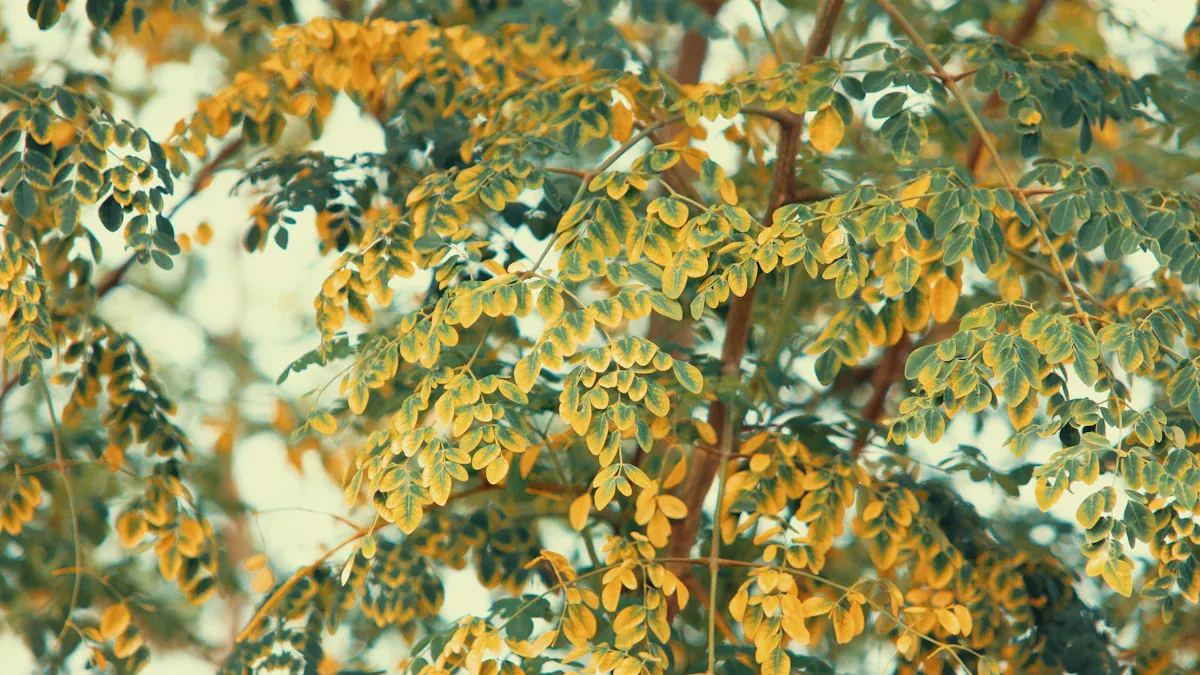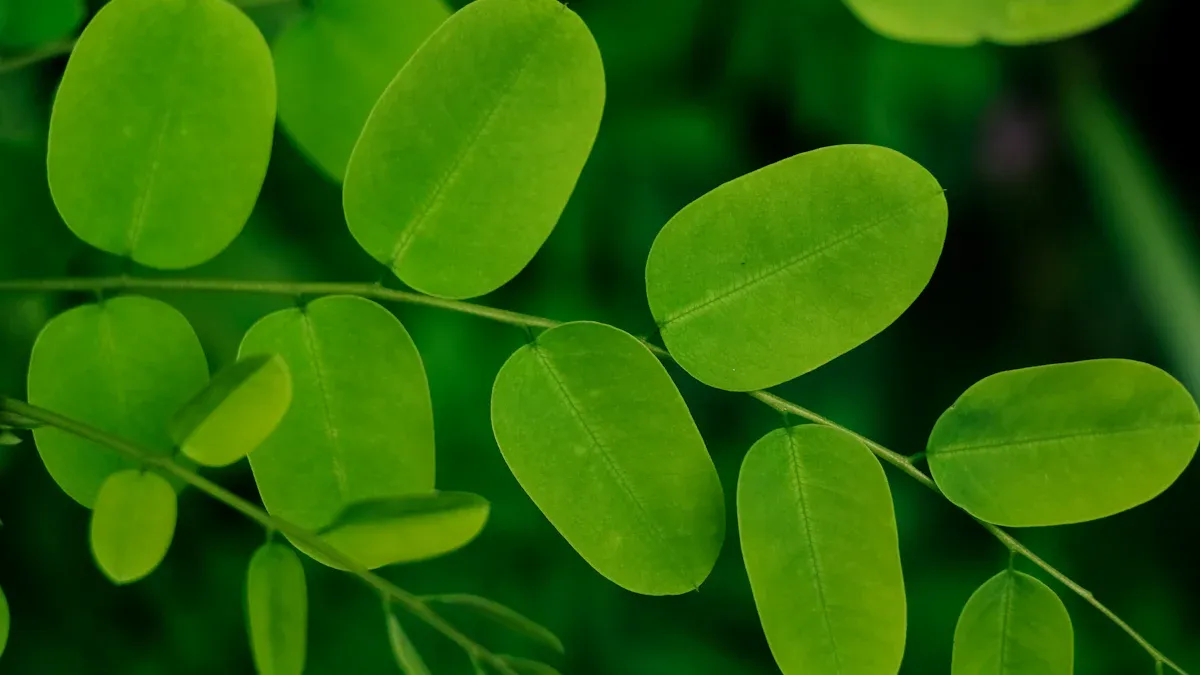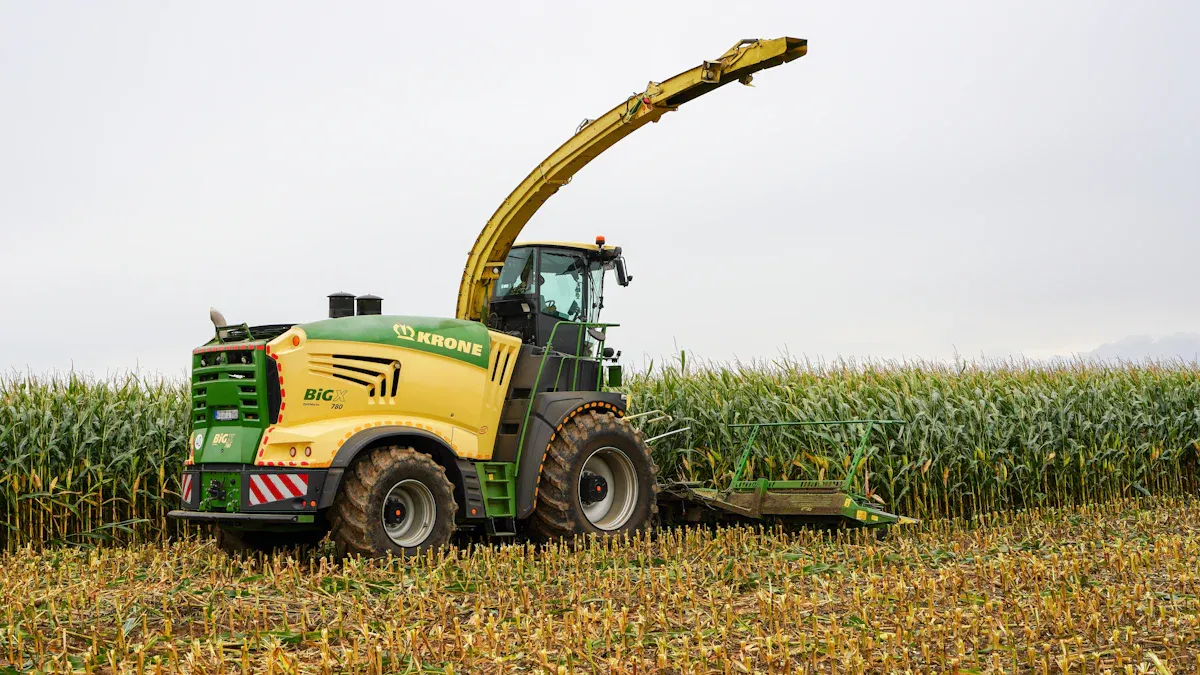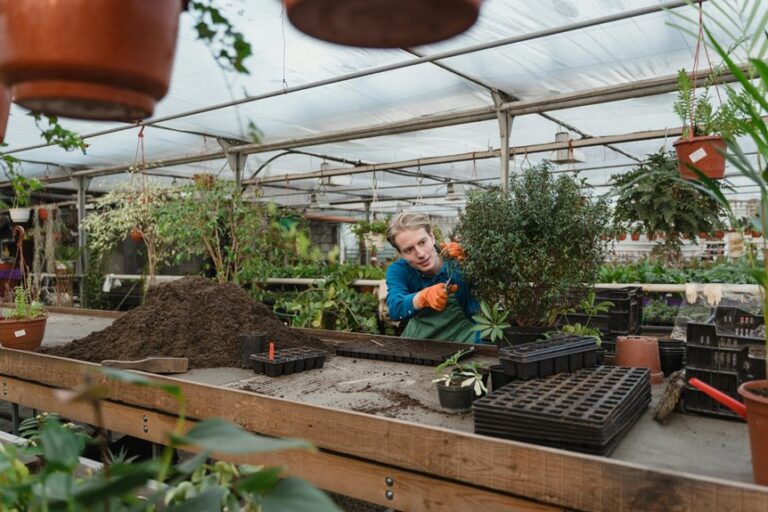
Harvesting the Moringa plant at the right time and using effective techniques can significantly impact your yield. By optimizing your approach to Moringa plant harvesting, you can maximize the yield per acre and improve the quality of your Moringa leaf products. Understanding when to harvest the Moringa plant allows you to enjoy the full benefits of this nutritious plant. Make sure to pay attention to the signs of maturity and choose the best methods for Moringa plant harvesting to reap the rewards.
Key Takeaways
Harvest Moringa leaves when they are bright green and tender for maximum nutrients and flavor.
Monitor NDVI values around 0.85 and ensure temperatures stay above 10 °C for optimal leaf growth.
For pods, wait until they are brown and dry to ensure seeds are mature before harvesting.
Consider seasonal timing for harvesting based on your region to enhance yield and quality.
Use handpicking methods to minimize damage and ensure a high-quality harvest of leaves and pods.
Maturity Signs

Leaf Readiness
You can determine when Moringa leaves are ready for harvest by observing several key indicators. First, look for vibrant green leaves that are tender and young. These leaves are packed with nutrients and flavor. The optimal harvest time for Moringa leaves occurs when the NDVI (Normalized Difference Vegetation Index) values reach 0.85. This value indicates healthy, vigorous growth. Additionally, ensure that the mean minimum temperatures stay above 10 °C. If temperatures drop below this threshold, Moringa plants may lose leaves and show reduced vigor.
Here are some signs that indicate Moringa leaves are ready for harvesting:
Leaves should be bright green and tender.
Harvest when NDVI values are around 0.85.
Ensure temperatures remain above 10 °C for optimal growth.
Pod and Seed Indicators
Moringa pods also have specific signs that indicate they are ready for harvest. You should look for pods that are brown and dry. This color change signals that the seeds inside have matured. Understanding the genetics of your Moringa plants and their cultivation methods can help you determine the best harvesting schedule.
Here are the key indicators for harvesting Moringa pods and seeds:
Pods should appear brown and dry.
Optimal maturity involves understanding plant genetics.
Create a harvest schedule to ensure proper timing.
To summarize the growth stages for harvesting Moringa leaves and pods, refer to the table below:
Growth Stage | Height (m) | Age (months) | Harvesting Notes |
|---|---|---|---|
Leaves | 1–2 | 3–4 | Harvest 4-9 times a year |
Pods | N/A | 12 | Harvest when pods are brown and dry |
By recognizing these maturity signs, you can ensure that you harvest Moringa leaves and pods at the right time for maximum yield.
Best Time for Moringa Harvesting
Seasonal Timing
Timing your Moringa harvest according to the seasons can greatly enhance your yield. Different regions have unique optimal harvest months based on their climate. For example, in North India, you should harvest during the summer when the fruits ripen. In South India, you can harvest twice a year: from July to September and again from March to April.
Here’s a quick overview of the optimal harvest months in major growing regions:
Region | Optimal Harvest Months |
|---|---|
North India | Summer (Fruits ripen) |
South India | Twice a year: July to Sept, March to April |
Regularly harvesting Moringa leaves when they are young and tender encourages new growth. You can also pick pods when they are very young and green for vegetable use. Mature pods can be left to dry for seed collection. This practice ensures that you maximize both the quantity and quality of your harvest.
Climate Effects
Climate plays a crucial role in determining the best time for harvesting Moringa. Several factors can influence your harvesting schedule:
Temperature fluctuations: Rising global temperatures and heat waves can stress Moringa plants, affecting their growth and productivity.
Water management challenges: Erratic precipitation patterns lead to longer dry periods and intense rainfall, disrupting planting schedules and increasing reliance on irrigation.
Biological impacts: Warming temperatures allow pests to expand their range and increase their reproductive cycles, while changing humidity levels favor plant pathogens.
Understanding these climate factors can help you plan your harvest more effectively. For instance, in tropical areas with consistent rainfall, Moringa plants tend to flower continuously. In contrast, dry areas may yield two harvests per year.
Here’s how different climate factors impact Moringa plant readiness for harvest:
Factor | Impact on Moringa Plant Readiness for Harvest |
|---|---|
Rainfall Patterns | In tropical areas with consistent rainfall, Moringa has constant flowering; in dry areas, it yields two harvests per year. |
Temperature Fluctuations | Optimal growth occurs at daily average temperatures of 25–35 °C; low temperatures (below −1 °C) can be detrimental, leading to plant death. |
Harvesting Frequency | In Spain, only one pod harvest occurs between August and September, while leaves can be cut 3 to 5 times per season due to high yield. |
By considering seasonal timing and climate effects, you can optimize your Moringa harvesting strategy for maximum yield and quality.
Techniques for Moringa Plant Harvesting

Handpicking Methods
Handpicking is a common method for harvesting Moringa leaves and pods. This technique allows you to select the best parts of the plant while minimizing damage. Here are some effective handpicking methods you can use:
Avoid washing Moringa branches before stripping leaves. Washing can cause the leaves to stick to your hands, making the process more difficult.
Use a stripping motion to pull leaves off the branches. This method helps you gather leaves quickly and efficiently.
If you find flower buds while harvesting, consider adding them to your dishes. They enhance flavor and nutrition.
When it comes to harvesting Moringa pods, follow these tips:
Harvest pods when they are young and tender. This ensures the best taste and texture.
Use a sharp knife or scissors to cut the pods from the tree carefully. A clean cut prevents damage to the plant.
Perform harvesting in the morning when the pods are cool. This practice helps maintain freshness.
By using these handpicking methods, you can ensure a high-quality harvest of Moringa leaves and pods.
Mechanical Harvesting
Mechanical harvesting offers a different approach to Moringa plant harvesting. This method can be efficient, especially for larger operations. However, it comes with its own set of advantages and disadvantages. Here’s a breakdown:
Advantages of Mechanical Harvesting | Disadvantages of Mechanical Harvesting |
|---|---|
Reduces harvest cost | Lacks precise judgment for optimal maturity |
Accelerates harvesting | Does not allow for selective harvesting |
Utilizes labor force effectively | Not suitable for crops needing multiple harvests |
May cause excessive damage to fruit and plants | |
Can be expensive for small-scale orchards |
While mechanical harvesting can speed up the process, it may not always be the best choice for every situation. You should consider the scale of your operation and the specific needs of your Moringa plants.
Pruning and Maintenance
Pruning Techniques
Pruning plays a vital role in promoting bushier growth in your Moringa plants. By using effective pruning techniques, you can enhance leaf and pod production. Here are some methods you can apply:
Topping: Cut the main stem above a node. This encourages lateral growth, resulting in a bushier appearance.
Pinching: Remove the terminal bud or shoot tip. This redirects growth energy to develop multiple new shoots.
Timing: Start pruning when your plant reaches 1-2 feet tall and has several branches. Perform this task during the dormant season or just before the growing season.
Regular pruning helps manage the canopy spread. You should prune Moringa plants above 5-6 feet every alternate year. This practice facilitates easier harvesting of pods. Additionally, annual pruning to about 3 or 4 feet above the ground can optimize growth and improve overall production.
Staggered Sowing Benefits
Staggered sowing is another effective strategy for maximizing your Moringa yield. This technique involves planting seeds at different times throughout the growing season. Here are some benefits of staggered sowing:
Continuous Harvest: You can enjoy a steady supply of fresh Moringa leaves and pods. This approach reduces the risk of having all your plants mature at once.
Improved Pest Management: By varying the planting times, you can minimize pest infestations. Different growth stages can deter pests that target specific plant ages.
Enhanced Resource Utilization: Staggered sowing allows you to make the most of available resources, such as water and nutrients. This practice can lead to healthier plants and better yields.
By implementing proper pruning techniques and staggered sowing, you can significantly enhance the yield and production of your Moringa plants. These practices not only promote bushier growth but also ensure a continuous supply of this nutritious plant.
In summary, understanding the optimal timing and techniques for harvesting Moringa is crucial for maximizing your yield. By recognizing maturity signs, you can ensure that you harvest leaves and pods at their peak. Implementing effective harvesting methods, whether through handpicking or mechanical means, can significantly enhance the quality of your produce.
Consider these practical results observed by growers:
Aspect | Results |
|---|---|
Production | Rapid entry into production with biomass yields of 6-800 T/ha and sustained leaf powder production of 2-3 T/ha. |
Profitability | Significant reduction in plantation and harvesting costs leading to notable increases in profitability. |
Harvest Quality | High-quality leaves (100% Pure and Fine) due to optimal harvesting technology that prevents damage and preserves aromas. |
By applying these practices, you can achieve better yields and enjoy the full benefits of this nutritious plant.
FAQ
What is the best time to harvest Moringa leaves?
You should harvest Moringa leaves when they are young and tender, typically every 4-6 weeks during the growing season. Look for vibrant green leaves as a sign of readiness.
How often can I prune my Moringa plants?
You can prune your Moringa plants every 1-2 years. Regular pruning encourages bushier growth and improves leaf and pod production.
Can I grow Moringa in containers?
Yes, you can grow Moringa in containers. Ensure the pot has good drainage and use quality soil. This method allows for easy mobility and care.
What pests should I watch for when growing Moringa?
Common pests include aphids, spider mites, and whiteflies. Regularly inspect your plants and use organic insecticides or natural predators to manage infestations.
How can I store harvested Moringa leaves?
Store harvested Moringa leaves in a cool, dry place. You can also freeze them for longer storage. Dried leaves can be ground into powder for easy use in recipes.


